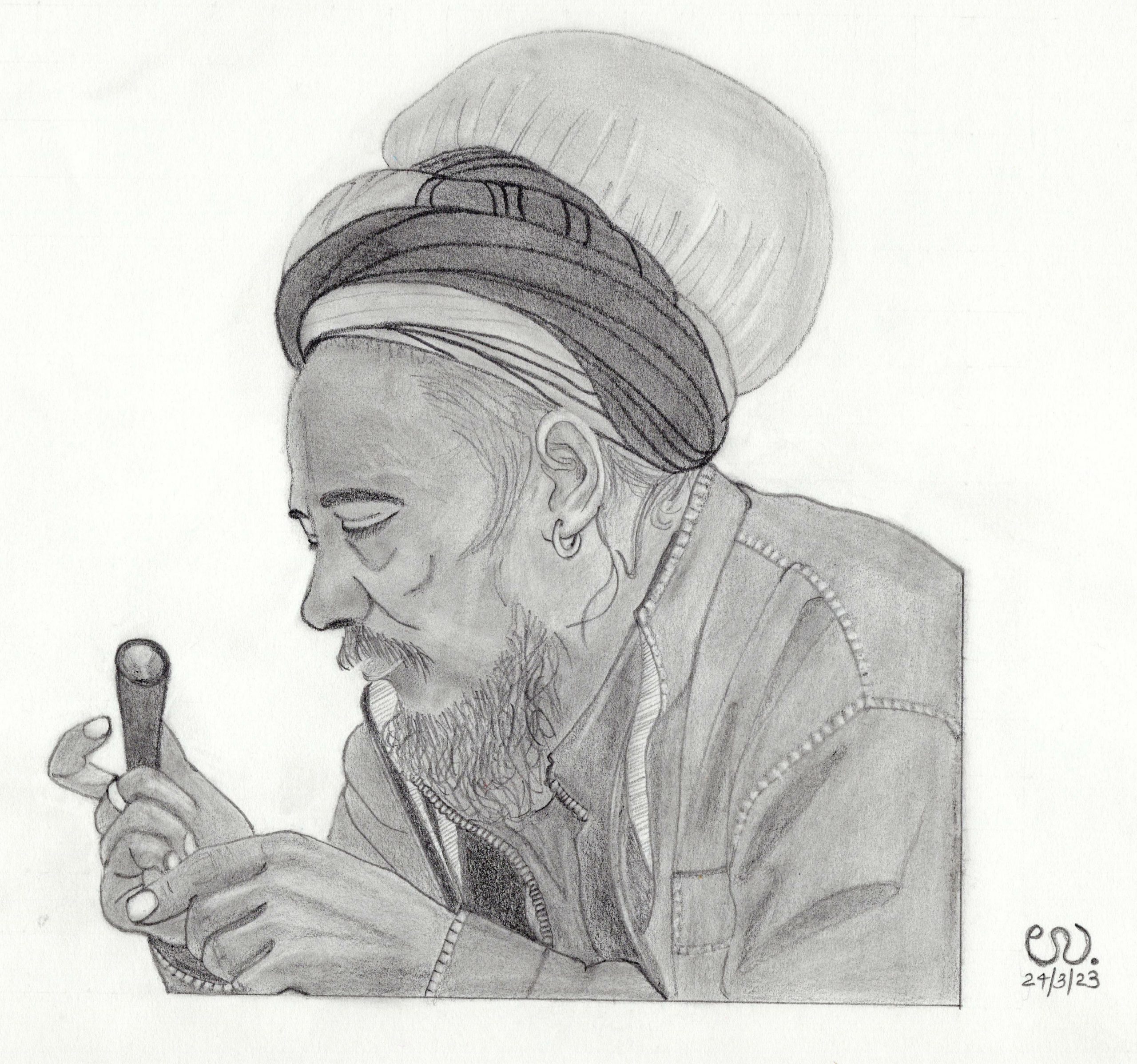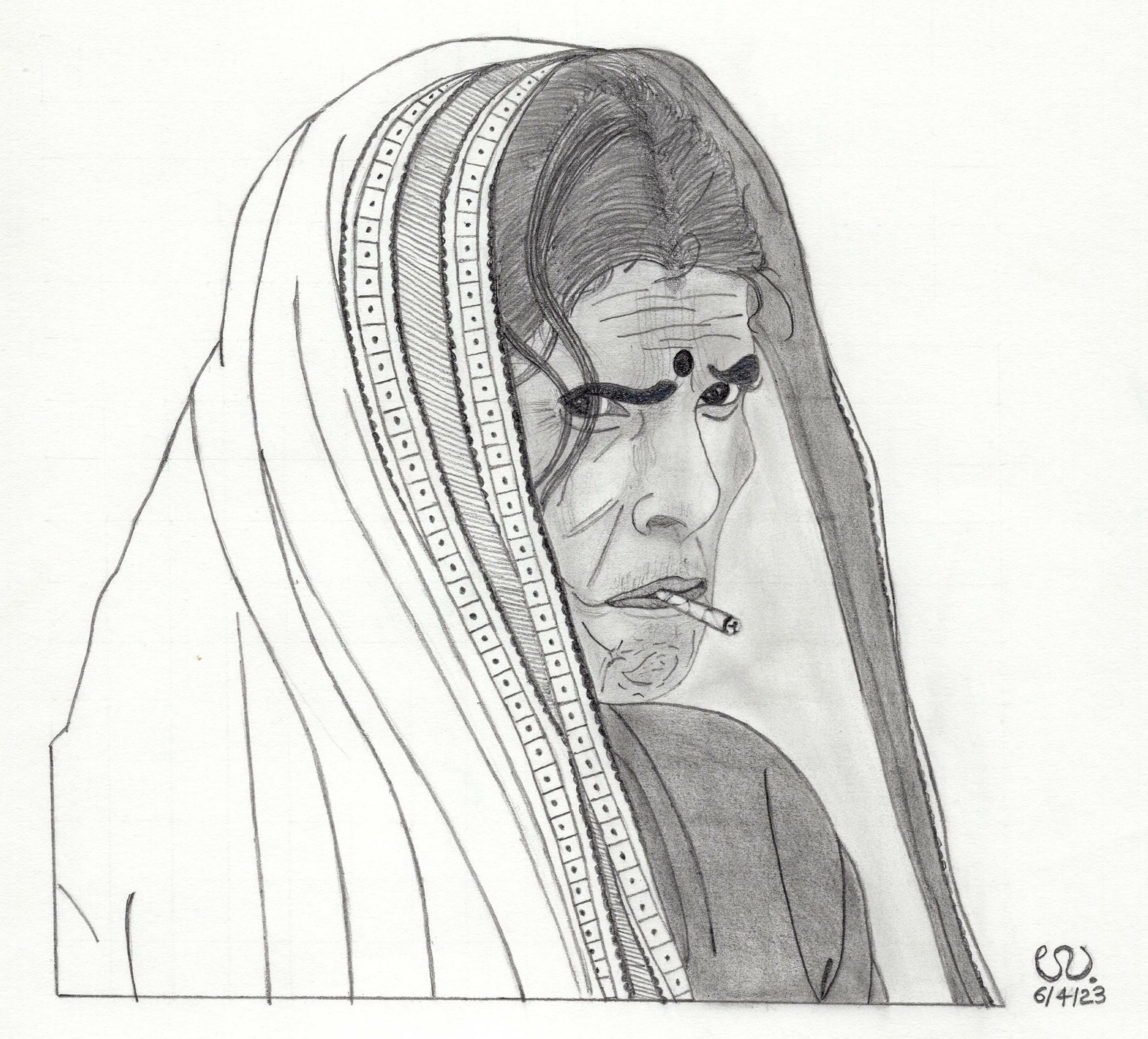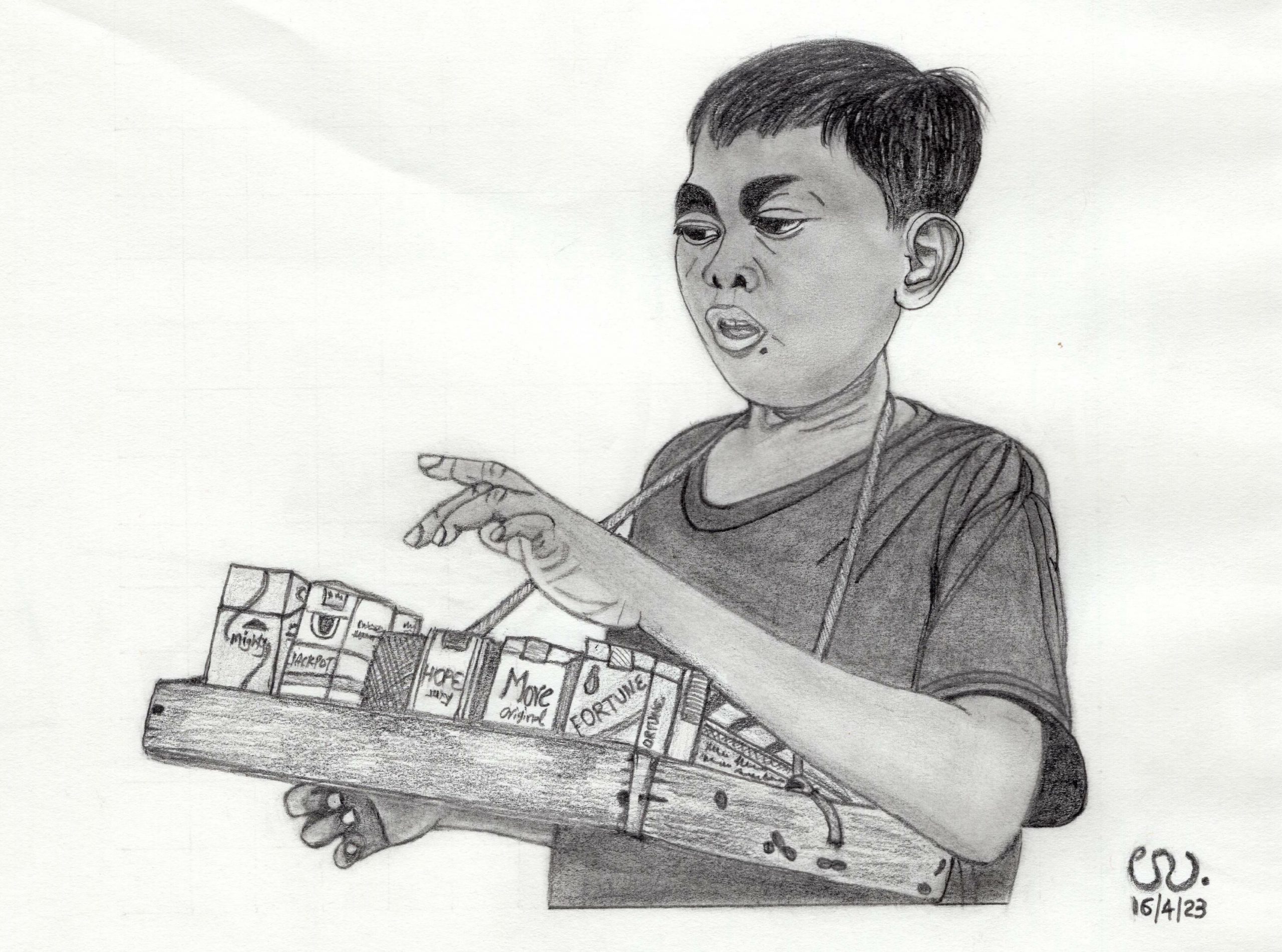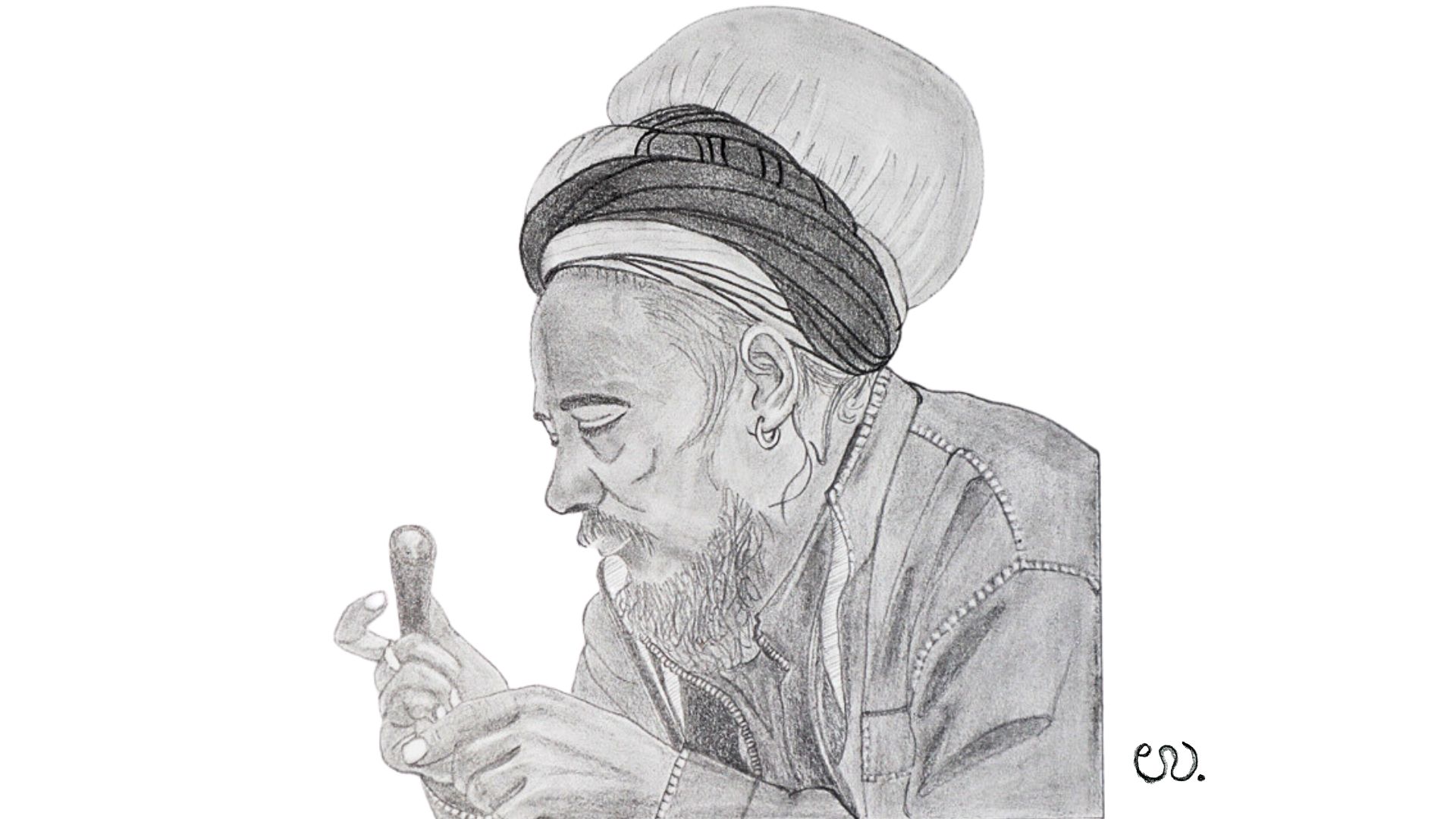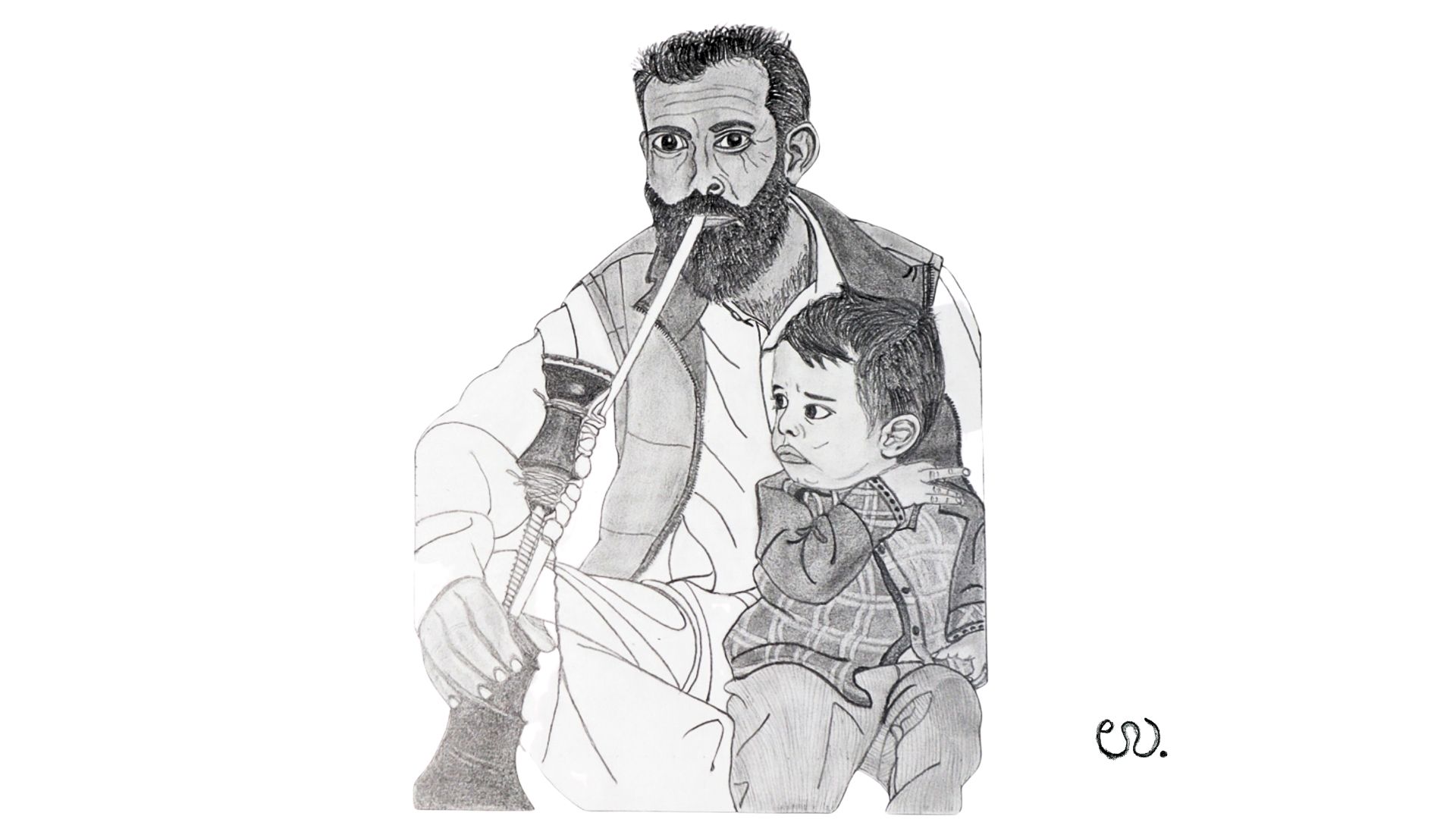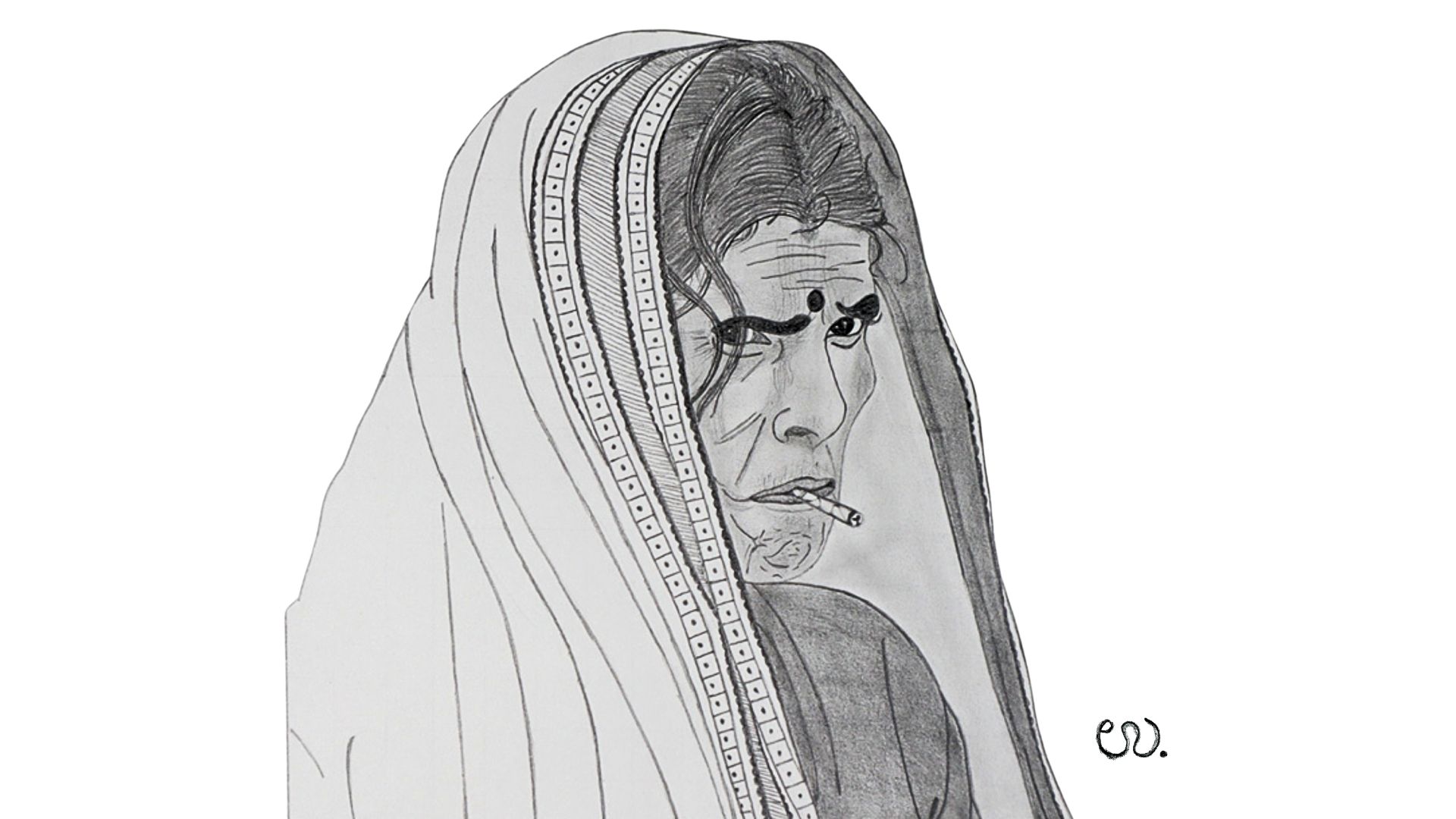This digital exhibit showcases pencil-on-paper drawings of people engaged in using or producing more traditional forms of tobacco prevalent in India and South Asia. The exhibit is intended to generate public engagement on historical, socio-cultural and economic contexts in which tobacco is used and the associated harms and regulations. These drawings are by Upendra Bhojani, a faculty & DBT/Wellcome Trust India Alliance fellow (2018-2023) at the Institute of Public Health Bengaluru, exploring political economy of tobacco in India.
Chillum Smoking
Artist: Upendra Bhojani
English
Hindi (हिन्दी)
Kannada (ಕನ್ನಡ)
The Arrival of Tobacco in India
Artist: Upendra Bhojani
English
Hindi (हिन्दी)
Kannada (ಕನ್ನಡ)
A Boy Selling Tobacco
Artist: Upendra Bhojani
Hookah Smoking
Artist: Upendra Bhojani
English
Hindi (हिन्दी)
यह रेखाचित्र जम्मू और कश्मीर के गुज्जर बकरवाल जनजाति के एक आदमी और उसके बेटे का है। वे खानाबदोश जीवन जीते हैं जो गर्म मौसम में पहाड़ों पर रहते हैं और ठंडे महीनों में मैदानी इलाकों में अपने मवेशियों के लिए हरे-भरे चरागाह की तलाश में रहते हैं। हुक्का तम्बाकू (या भांग, अफीम) को गर्म करने के लिए इस्तेमाल किया जाने वाला एक उपकरण है, जिसमें धुएं को साँस लेने से पहले पानी के माध्यम से पारित किया जाता है। हुक्का का आविष्कार संभवतः अकबर (ईस्वी. १५४२-१६०५) के एक फारसी चिकित्सक द्वारा मुगल भारत में किया गया था, जो तंबाकू को पहली बार अकबर के सामने पेश किए जाने पर धुएं को “शुद्ध” करना चाहता था। वैकल्पिक रूप से, हो सकता है की हुक्का का आविष्कार पहले ही फारस में हुआ हो और फिर वहां से भारत में फैला हो। समय के साथ, हुक्का साझा करना समूहों में सामूहीकरण करने का एक तरीका बन गया। ग्रामीण भारत में वयस्कों में प्रचलित यह आदत अब शहरों में युवाओं में लोकप्रिय हो रही है। हुक्का द्वारा तम्बाकू का धूम्रपान स्वास्थ्य के लिए हानिकारक है जिससे कैंसर, हृदय रोग, फेफड़ों के रोग और कई अन्य बीमारियों का खतरा बढ़ जाता है। हुक्का साझा करने से भी संक्रामक रोग फैल सकते हैं। हुक्का से निकलने वाले धुएँ के संपर्क में आना, जिसे अक्सर पैसिव स्मोकिंग या सेकेंड-हैंड स्मोकिंग कहा जाता है, जैसा कि इस स्केच में बच्चे के मामले में है, यह भी स्वास्थ्य के लिए हानिकारक है। यह चित्र सैयद क़आरिफ अंद्राबी की एक तस्वीर (CC लाइसेंस) पर आधारित है।
Kannada (ಕನ್ನಡ)
Beedi Smoking
Artist: Upendra Bhojani



